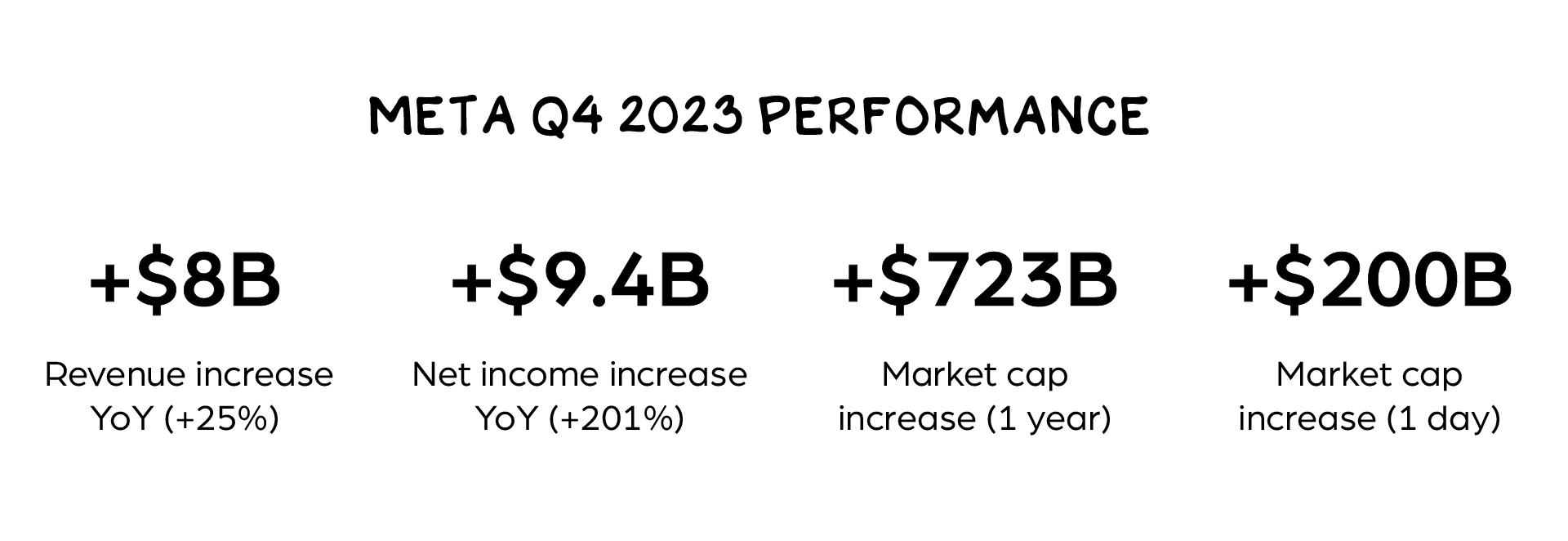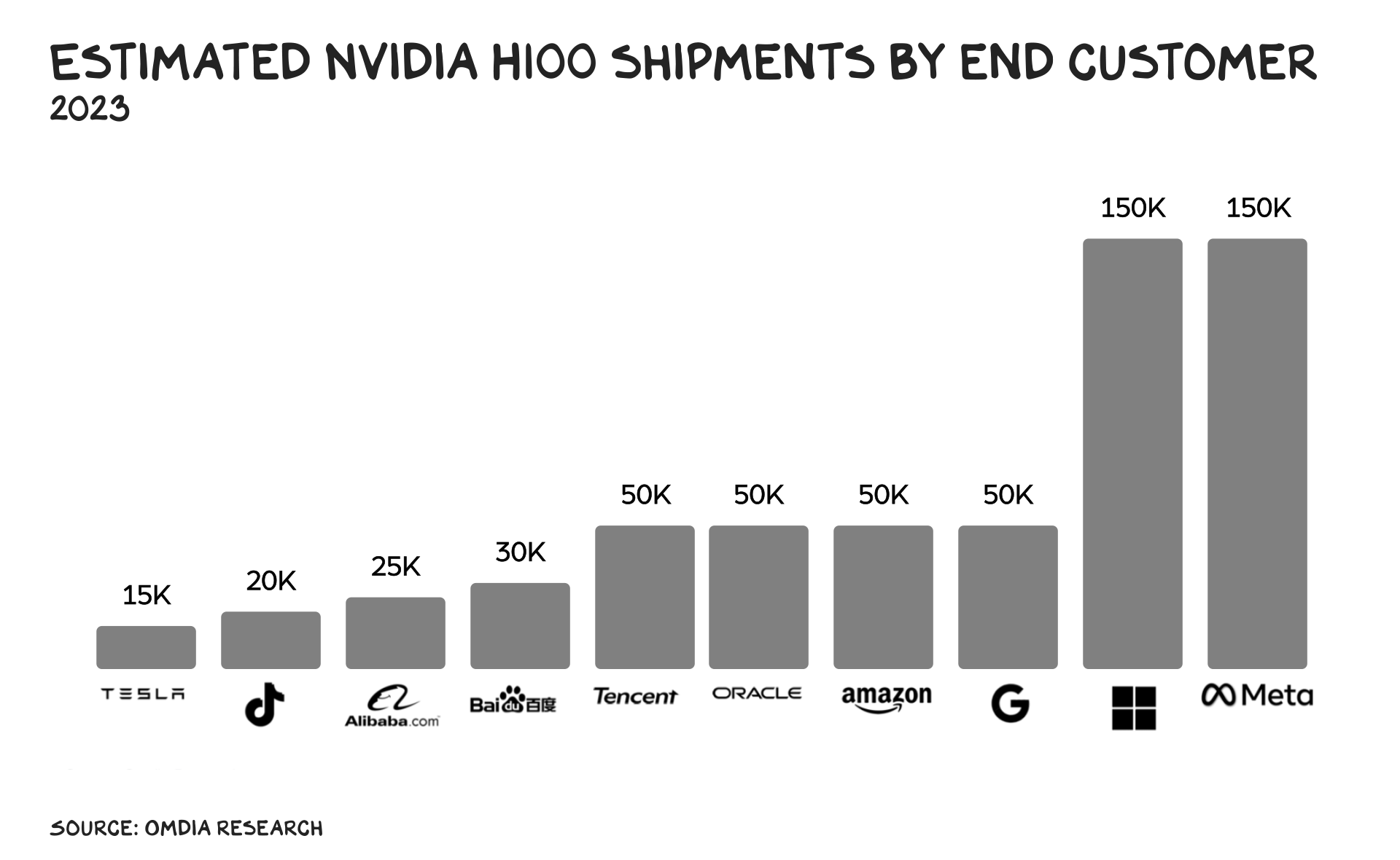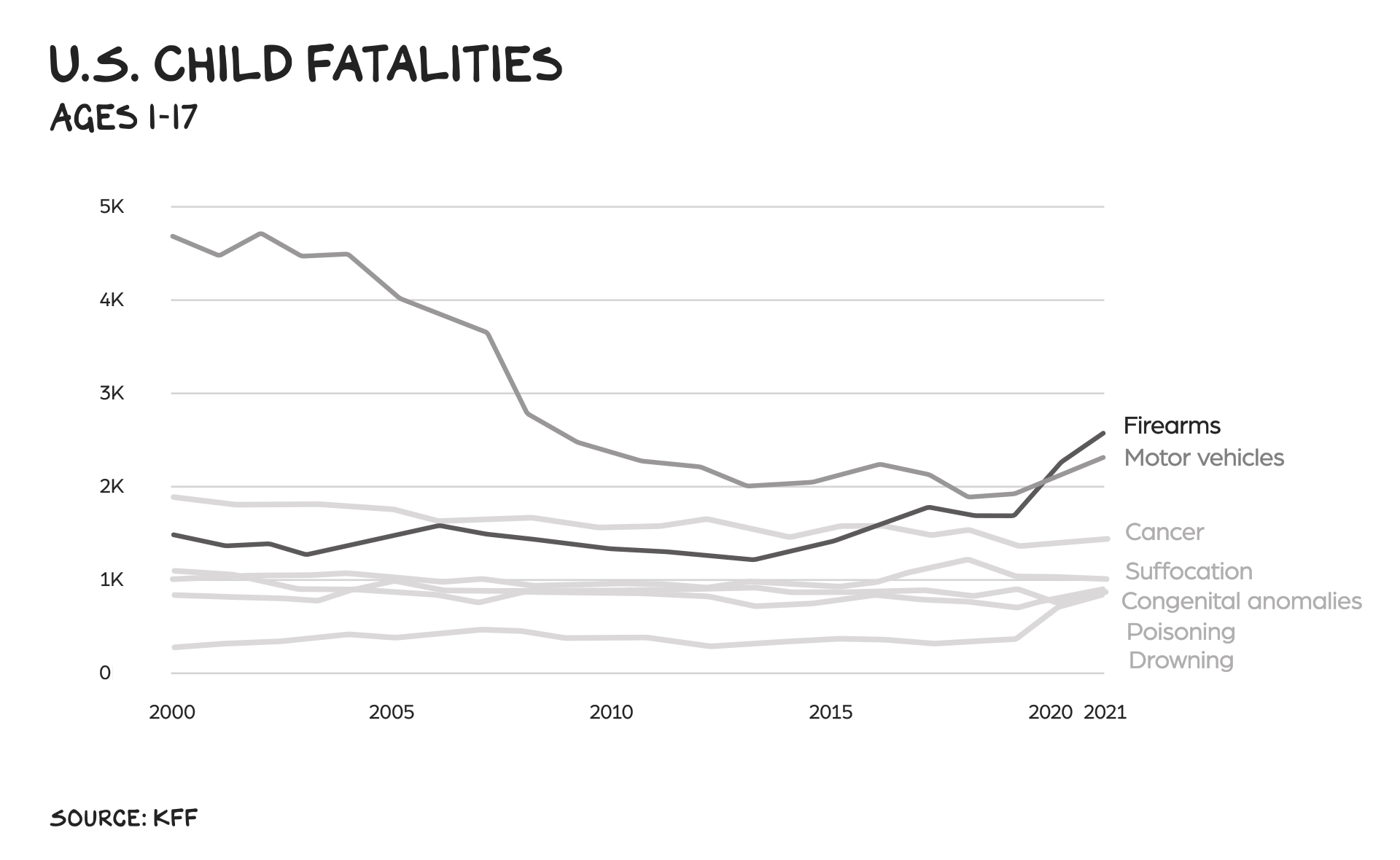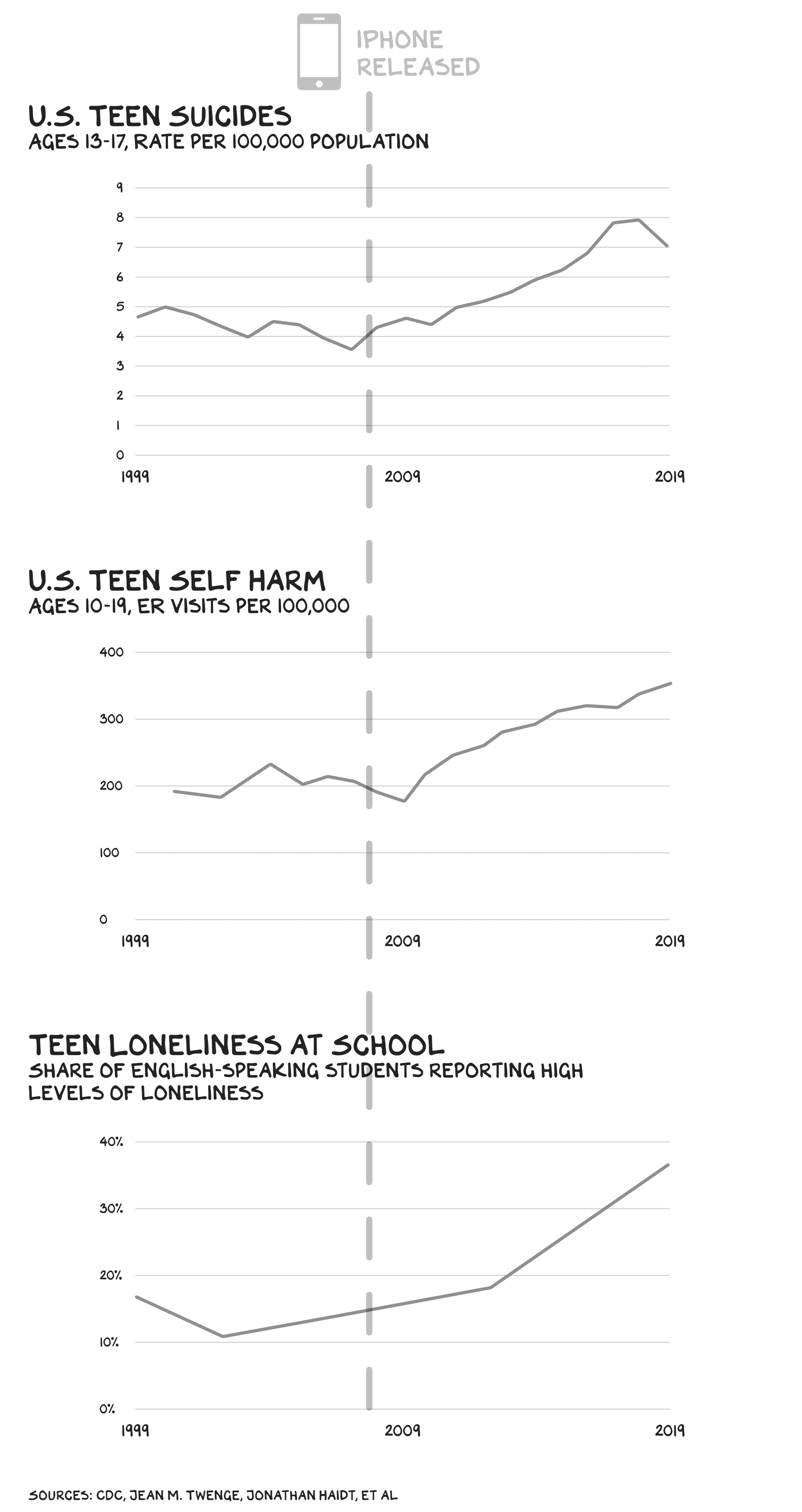Last week’s quarterly flogging of tech executives made for good theater. It’s a show meant to make us feel something before we return to our lives. American media soon pivoted to something more important and more American, money. Meta announced earnings on Feb. 1, posting one of the most impressive quarters in business history. Some year-over-year numbers, vs. last year’s 4th quarter:

In the past year, Meta has added three Netflixes to its market cap. On Friday alone, it added the value of Shell Oil — the biggest one-day increase in market capitalization in history.
When GPT-4 Is GLP1
The most impressive feature of the results isn’t the top-line growth, but the company’s headcount. Specifically, the reduction in headcount. Meta has laid off nearly one-fourth of its workforce, a disruptive and costly process. General Motors, in an effort to stave off bankruptcy in 2008, laid off a third of its workforce. Obviously, any firm laying off a quarter of its employees is desperate, right? Wrong. Instead of declining, Meta exploded, adding the value of 30 (2008) General Motors in one day. To the best of my knowledge, no business of this size has ever increased revenue by 25% while shedding 25% of its employees. As it paid only 17% in taxes on the quarter, the company’s earnings per share tripled from $1.76 to $5.33. Meta, suddenly having more money than management knew what to do with, announced a 50¢ quarterly dividend and a $50 billion stock buyback.
Meta was able to simultaneously slim down and muscle up in part because its pandemic weight gain was so large. The empty calories of 2020-21 resulted in fatty deposits forming firm-wide. That’s been obvious, but the more interesting question is whether we are witnessing Meta go Black Mirror. Is AI the firm’s Ozempic? Preorders of Nvidia enterprise GPUs are a decent proxy for a firm’s investment in AI, and Meta has ordered more than any company in the world. (Tied with MSFT.) Does this mean the companies in the chart below are about to shed 10% to 25% of their weight/workforce while maintaining revenue growth?

The Ozemping of Meta unlocked its operating margin, which increased from a respectable 20% to a staggering 41%. Meta exemplifies an “asset-light” model. Don’t own the car, apartment, chip plant, or content (the creators’ salaries) — build a thick layer of software on top of other people’s assets. Shein, which owns no stores, factories, warehouses, or even distribution centers, is using this strategy to become the fastest retailer to $1 billion in history. Meta speedballs this with an addictive product in an unregulated market. Now, years of investment in AI might be adding another leg to the stool — virtual workers who don’t expect pet-bereavement leave.
Hate Machine
However, there’s a glitch in the Matrix. At first unwittingly and then undeniably, Meta’s products have become the most elegant and powerful hate machine known to man. A machine unfettered by the friction of humans deciding if the firm should send images of nooses and razors to a 14-year-old girl consuming videos on self-harm. AI, as instructed by the Zuck, will likely make things worse, not better. Like by like, and comment by comment, the machine divides us and makes us despise others and ourselves.
The Wright brothers invented flight, but Boeing scaled it. Enragement was not invented by Mark Zuckerberg and Sheryl Sandberg, but they scaled it … to over half the planet. Nearly 4 billion people use a Meta service over the course of a month, so in any 30-day period, almost half the planet loses a friend over politics on Facebook, gets taken by a crypto scheme on WhatsApp, or learns how to induce post-meal vomiting on Instagram.
The negative effects of social media are well documented, and I’ve written about them before. The most concerning problem is what these platforms do to our children. When the mobile phone put Facebook and IG into every teen’s hands 24/7, loneliness and suicide data began a steady march upward. In a survey of 1,024 young people, almost half “have become withdrawn, started exercising excessively, stopped socializing completely, or self-harmed because they are regularly bullied or trolled online about their physical appearance.”
The suicide rate among 13- to 17-year-olds has doubled since the iPhone put social in their pockets. If Julia Roberts, one of the most beautiful women in the world, posts a picture of her with her niece and receives hundreds of comments disparaging her looks, what chance does a teen girl have to get through adolescence unscathed?
Apologists
A few days before Meta released historic quarterly numbers, Zuckerberg was in D.C. Social media CEOs on Capitol Hill are not the novelty they were a few years ago. So, to liven things up, Missouri Senator Josh Hawley asked Zuck to stand and face a contingent of grieving parents who’d come to the hearing, many holding pictures of their deceased children, and apologize.
It was a cathartic moment for anyone angry at Zuck, but the truth is, the wrong person was apologizing. Meta is a bad company run by amoral people who do strange things, but we keep hoping that shaming executives will force their better angels to show up and protect our children. They haven’t, and they won’t. The lion doesn’t care what the lamb thinks. That’s why we have laws and, ostensibly, lawmakers. Meta has done little to protect children from its products — but it’s done more than Congress, which has done nothing. Senator Hawley and his 99 partners in failure owe those parents the apology. The problem isn’t Meta, so much as our inability to do anything about Meta.
Guns, Cars, and Social
The two leading reported causes of death among young Americans are guns and cars. You can make the argument that social is more dangerous to our children than guns or cars. Since 2007 the suicide rate among young Americans has gone up by 60-70%, meaning an additional 2,000 lives lost annually in the social media era. That approximates, and overlaps with, the 2,571 young people killed by guns in 2021. And suicides are just the tip of the social media spear. Most kids negatively affected by social media will survive, but they’ll suffer to varying degrees. Millions of children are bullied online, develop eating and/or sleep disorders, suffer academically, engage in self-harm, and sequester from friends and social events. These are all human costs, in the shape of a profound public health crisis.

Yet social media doesn’t appear on this chart because its harms are more diffuse, and its causality harder to pin down. Zuck can tell Congress, “Mental health is a complex issue, and the existing body of scientific work has not shown a causal link between using social media and young people having worse mental health outcomes.” Which is not true, but just defensible enough that Meta’s comms army can coach their CEO to repeat it without their boss committing a clear felony. Whereas gun violence is widely recognized as a national scourge, even by people who think the answer is more guns.
Of these three public health threats, we’ve made large strides against just one of them. Car accidents now kill fewer people under 18 than guns. Just 25 years ago, three times as many kids died on the roads as from guns. What’s changed? Cars. Airbags, crumple zones, and electronic stability control have reduced crashes and serious injuries. (Note: Cars still kill far too many pedestrians and cyclists.)
Car companies didn’t upgrade their product with safety features out of concern for our well-being — airbags were commercially viable in the 1970s, but automakers lobbied against requiring them for decades, until Congress mandated them in 1991. Cars are safer and kill fewer people, in substantial part, because government regulations, government safety standards, and exposure to personal injury litigation forced manufacturers to make changes.
The same is not true of guns or social. Both industries are insulated from the dangers of their products; they haven’t been forced to adopt available technologies equivalent to air bags and antilock brakes: trigger locks and safe storage requirements for guns, age limits and proper moderation on social.
Limits on social media would in fact be a Buy One Get One Free deal. The gun lobby has a point that “guns don’t kill people, people do.” Gun control puts more barriers between intent and weaponry. Regulating social media would reduce intent, as it increasingly plays a central role in the shooter’s path to murder and suicide.
Look in the Mirror
This Congress has been historically unproductive, but when it comes to regulating social media, inaction is par. In the late 1990s, before tech had a major presence in D.C., Congress established limits on online services to children under 13 and the distribution of potentially harmful content. Those days are gone. Since 2017, Congress has held 40 hearings on children and social media and passed nothing. Democrats and Republicans have introduced legislation, including to age-gate social and to reform Section 230 (which immunizes internet platforms from most litigation), but nothing gets done. Senator Durbin had it right: “The tech industry alone is not to blame for the situation we’re in. Those of us in Congress need to look in the mirror.”
What Is Money?
Money is a mechanism for the transfer of time, work, and services. It’s a wonderful thing. You can pay your kids with housing and food so they are freed up to go to school and play. You can pay for your husband’s living expenses so he has the time to take care of the kids. And you can pay someone to do things that would take you more time to do yourself. Meta and the rest of the Big Tech companies create extraordinary economic value. This is important and can justify some externalities. Some. In America, however, we have chosen prosperity over progress.
Meta’s earnings last week were singular, as is the platform. Unlike the rest of Big Tech, however, Meta is a net negative for the world. Depression and despair are costly, and we are spending more time worrying about our kids than a $200 billion increase in market cap can assuage or buy back. Many equity analysts argue that at $470/share, META is too expensive. They miss the larger point. Meta Inc. has become too costly.
Life is so rich,

P.S. Every Wednesday on the Prof G Pod I answer your questions. This week: job hopping, paternity leave, and starting a business. Listen here.
P.P.S. Join a free event, Where’s the Money in AI?, featuring Exponential View’s Azeem Azhar.




